We are on the cusp of realizing the efficiencies promised by Industry 4.0 innovations. As software bots, autonomous vehicles and the ubiquitous Internet of Things connect and streamline tasks performed by humans, organizations wrestle with a workforce dilemma. How to realign the capabilities of their workforce with the rapidly advancing technology that’s propelling their evolving operations? How can they adapt? And what if they don’t? Can they survive without adapting?
I fear too many will limit upskilling and reskilling efforts to training. Sure, training will be essential, but it typically shows up in Act III. Let’s look at all the Acts and get the full story.
Accept that the challenge is larger than just training.
First, leadership teams need to accept that training is not a panacea. It’s rarely sufficient to move an organization onto a new accounting platform or the latest version of Windows. And now the challenge is much bigger. Companies aren’t just trying to swap out an application — they’re trying to transport their workforces into entirely new realities.
The workforce is saturated with employees who have mastered their jobs in the Industry 3.0 world. To successfully transition to the next industrial iteration, these same employees must, as Alvin Toffler presciently noted, “learn, unlearn and relearn.” To do that, you’ll need more than a great PowerPoint.
Generate robust learning agility.
Companies need to build, embrace and maximize the “learning agility” of their employees. Discussions of learning agility often focus on the individuals’ capability to learn new skills; however, what is equally if not even more important is their willingness to learn.
Years ago, I chose to study German in high school without questioning if I wanted to, simply because that’s what everyone did. Not surprisingly, I lasted only one semester. Nothing clicked. Today, I live in Amsterdam and am vigorously learning Dutch, a similar language. And I love it. The difference today is that I have a purpose, so I work at it every day in order to master it. That’s how powerful desire is when it comes to learning agility.
However, desire is entirely personal. What role can an organization take in creating the desire to learn?
Let’s start by zooming in on the individual employee. The desire to learn requires a clear vision of what the person wants to do with their personal and professional life. Individuals must find their purpose to recreate themselves. Then they assess where they are today, define the gap and build the necessary skills to bridge the gap. This is easy to say, but tough to do. We are too close to our reality to figure it out alone. That’s precisely why we need coaching. A coach or mentor can step in and help us articulate the specific steps required for the vision to become a reality.
Now, take a wide-angle view: The organization’s role in this picture is to provoke and combine purposeful self-awareness with ample coaching resources across the workforce. A corporate culture that compels these practices and provides abundant coaching solutions will maximize learning agility.
Follow the 70-20-10 model.
To be future-proof and avoid being wiped out by the Industry 4.0 wave, organizations must generate multiple levels of learning agility to inspire people to learn a different job — not just how to do their current job a little differently.
Organizations are responsible for aligning their human capital with these technological advances. They need to apply a different organizational development (OD) model that prioritizes the significance of learning agility. Most learning and development (L&D) professionals are familiar with the 70-20-10 development model: learning by experience (70%), social learning (20%) and training (10%).
Let’s start with the dominant component: experience (70%). Companies plant the seeds of learning agility by emphasizing goals, experience and perspective. They establish a compelling purpose — a tangible goal the workforce can grasp and rally around. Leadership explicitly fosters excitement, vision and psychological safety: “We’re with you in this!” This solidifies the purpose and prompts reflection upon past growth and accomplishments. It encourages and allows experimentation and exploration — risk-taking that presumes that failure and mistakes will fuel collective learning.
However, the organization, and everyone within it, must realize and accept that the circumstances and practices that brought them to their current station will not deliver them to their future state. That brings us to our next phase.
Social learning (20%) accelerates learning agility through coaching, mentoring and peer learning. These essential tools guide the organization along its path from “here” to “there.” The stronger the coaching culture is within the organization, the more influential the social learning aspect will be, therefore driving 20% of the process. And the organization must have a robust and committed culture of coaching and accountability. That’s when development customization is triggered to complete the transformation.
The final 10% — training — includes various implements the organization uses to build specific skills, capabilities and knowledge. Notice that training is the smallest element and occurs near the end of the transformation. It’s not the be-all-end-all. Training — which organizations too frequently leap to when facing this type of challenge — is the differentiator. Here, we fine-tune skills, capabilities and fluencies by employing e-learning, workshops and traditional training courses.
A vibrant coaching culture sets the stage.
Industry 4.0 poses a monumental challenge to many industries and organizations. It’s the most daunting of the evolutionary phases. Today, machines are thinking for us — they’re not just tightening bolts or assembling motherboards like they used to. Systems share information, operating and adjusting autonomously and analyzing and optimizing at the speed of light. Our inherent adaptability, spirit and perseverance will enable organizations to leverage these innovations and bring their people along for the ride.
If the workforce doesn’t understand, can’t envision or is unable to grasp its purpose and role in the organization’s future iteration, the learning agility is zero. Transformation fails. And if the organization isn’t willing to fully invest in coaching as a development tool and as a part of the corporate culture, any upskilling and reskilling initiative will be wiped out by the 4.0 wave.



